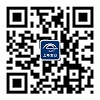A pharmaceutical company in Baoshan fosters new growth driver for cell therapy—Cytodrug priced as a cup of coffee
Cell therapy, a future industry that is expected to bring hope to cancer patients, is accelerating its development and agglomeration in Shanghai. According to the statistics of Cell and Gene Therapy Committee of Shanghai Biophamaceutics Industry Association, there are more than 100 cell therapy enterprises in China, about 40% of which are located in Shanghai. By far, the only two CAR-T products approved for marketing in China are both from Shanghai.
As “the next growth driver of biopharmaceutics industry”, this newly-started new track has extremely fast technology iteration and is characterized by deep integration of innovation chain and industrial chain. The Action Plan for Promoting Scientific and Technological Innovation and Industrial Development of Cell Therapy in Shanghai (2022-2024) sets the goal of achieving a 10 billion yuan scale in the cell therapy industry by 2024.
Therefore, Shanghai is paying close attention to the forward-looking layout of technology, promoting the collaborative innovation and development of upstream and downstream of the industrial chain to create the innovation front and the industrial growth driver of cell therapy. Let’s take a look at the efforts of these cell therapy enterprises to forge ahead on the “Ten-Billion-Scale New Track”.

As the new year begins, the high-end intelligent manufacturing project of Cheerland Biotechnology in Baoshan Medi Park began equipment hoisting. It is estimated that the hoisting of the first 15,000-liter production tank will be completed early next month. The total production capacity of high-end intelligent manufacturing of biopharmaceutics planned in the follow-up of this project will reach 1.08 million liters.
As one of the most innovative and dynamic cell therapy industry clusters in China, Shanghai began to develop biochemical reagents, culture systems, production equipment and other relevant fields very early. For the cell therapy industry, which is deeply integrated with the industrial chain in innovation chain, one more strong point means greater advantages and exponential agglomeration effect.
According to the China Cell and Gene Therapy (CGT) Industry Development White Paper released in 2021, the scale of China’s CGT market will reach 2.59 billion US dollars in 2025, and the compound annual growth rate from 2020 to 2025 will reach 276%. Driving the growth of this brand-new sector, the upstream and downstream enterprises of cell therapy will accelerate the further convergence of innovative elements such as technology, talents, and capital to the sector while ushering in the golden period of their own development.
Can we buy “cytodrugs” at the price of a cup of coffee?
Cutting the product price to 1/30 of the original through large-scale intelligent production is an attempt being made by the world’s leading CDMO (Contract R&D and Production Organization) enterprise Cheerland Biotechnology. At the end of 2022, the company’s million-upgrade biopharmaceutics R&D intelligent manufacturing project was launched in Baoshan Medi Park. The first batch will provide outsourcing services from pharmaceutical development in early clinical stage to commercial production in late stage for 9 enterprises across the country.
“A good ecosystem can greatly reduce costs.” As is estimated by the managing director and president of Cheerland Biotechnology, the company’s production capacity in Baoshan can reduce the price of monoantigen solution from more than 700 yuan to 20-30 yuan, which is equivalent to the price of a cup of coffee.
Previously, he spent six months persuading the company’s senior team to build a factory in Shanghai. There are two reasons for him to persevere in the “lobbying”: “On the one hand, we have to prioritize R&D, and Shanghai is a cluster for domestic biomedical frontier projects; On the other hand, we are optimistic about Shanghai’s CGT industry, where many new biomedical companies will spring up.”

Baoshan Medi Park where Cheerland Biotechnology settles
Super-large stainless steel bioreactor, a product adopting the core technology of Cheerland Biotechnology, is an indispensable “home” for cell culture. Enterprises dealing with cell therapy are thrilled at the arrival of Cheerland Biotechnology, as the high production and manufacturing costs of cytodrugs are expected to be greatly reduced.
The managing director and president of Cheerland Biotechnology revealed that 5,000 square meters of the 80,000 square meters of space carriers leased by Cheerland Biotechnology will be used for R&D of the CGT industries, and an incubator may be built in the future to accelerate product settling and industrial agglomeration with strong production capacity.
Making up for the lack of “indigenous innovation” of the domestic cell therapy industry
Tan Wensong, a professor at East China University of Science and Technology who has dealt with cell science for more than 30 years, had the experience of “getting grey hair overnight”. In 1998, the cells his team had raised for more than half a year became half dead after using a bottle of domestic reagents when it was very close to the conclusion of the project. After half of his hair grew grey because of anxiety, he made up his mind to make an easy-to-use domestic cell culture medium that domestic researchers dare to use in the future.

Culture medium product for cell therapy from Shanghai BioEngine Sci-Tec
The key of cell therapy lies in cells. At the end of 2014, with the support of relevant departments, Tan Wensong led the team to establish Shanghai BioEngine Sci-Tech Co., Ltd. in Pharma Valley of China, Zhangjiang, specializing in large-scale high-density culture technology of animal cells, investing heavily in innovative R&D of serum-free culture technology, and introducing international advanced powder production technology and the strictest international quality management system to build and operate the culture medium factory.
Up to now, BioEngine has independently developed over 100 catalogue serum-free culture media, serving nearly 100 clinical projects of more than 200 enterprises at home and abroad. Many of the culture medium production lines have been fully put into production, with an annual output of 55 million liters of powder culture media and 250,000 liters of liquid culture media.
BioEngine has made up for the lack of “indigenous innovation” of the domestic cell therapy industry Tan Wensong revealed that the price of similar products of a multinational enterprise immediately dropped to 1/5 of the original after the advent of a domestic antibody drug using BioEngine culture medium.

Today, many practitioners in the cell therapy industry don’t need to experience what Tan has suffered. “At present, at least a dozen cell therapy companies in China are using our serum-free culture medium, and our products and technologies are also used to support the overseas development of these companies. At the same time, we are also preparing to go global,” Tan said.
Ecological “rainforest” facilitates iterative innovation of domestic equipment and consumables
When Yescarta, the first CAR-T cell therapy product in China, went on the market, patients were discouraged by the “sky-high price of 1.2 million yuan per shot”. The production of virus vector accounts for a quarter of the total cost, and the cost of a key raw material is as high as 12,000 US dollars. According to industry insiders, most of the cell separators, cell cryopreservation equipment, supporting cell culture consumables, and separation magnetic beads involved in the R&D and production of cell therapy products in China are still imported. The cost of cell therapy products can be greatly reduced if related equipment and consumables can be processed domestically.

Tofflon develops cell culture equipment
In 2017, Shanghai Cell Therapy Alliance was established. Among the nine enterprises that initially joined the alliance, Tofflon is the only equipment enterprise. At that time, the enterprise was faced with two difficulties: one was the design and debugging of a complete set of cell culture equipment, and the other was the R&D of disposable consumables.
“Now, we have overcome both of them.” The general manager of Shanghai Tofflon Science and Technology Co., Ltd. said that at present, the company has been able to provide overall solutions for the preparation and production of immune cells, stem cells, and tumor cell vaccines, and realize one-stop service from cell sorting, amplification, and collection to filling and storage.

What touched him the most during the five years of R&D is collaborative innovation. “The alliance has gathered nearly 100 CGT companies and functions as a link. In the continuous exchanges and communication with these peers, we have been able to continuously iterate and improve products, thus making domestic equipment more stable to support the industrialization of CGT products.”
To foster the ecology of the cell therapy industry and build a more stable and complete industrial chain cluster, Shanghai is taking scientific research and innovation as the guide and relying on the increasingly rich biopharmaceutics industry to open up more space for the further development of the cell therapy industry. Through the implementation of the project of “fixing, strengthening, supplementing, and extending the chain”, Shanghai's “first-mover advantage” in cell therapy will be accelerated into “industrial advantage”, benefiting more patients.

宝山汇APP

上海宝山微信

上海宝山微博